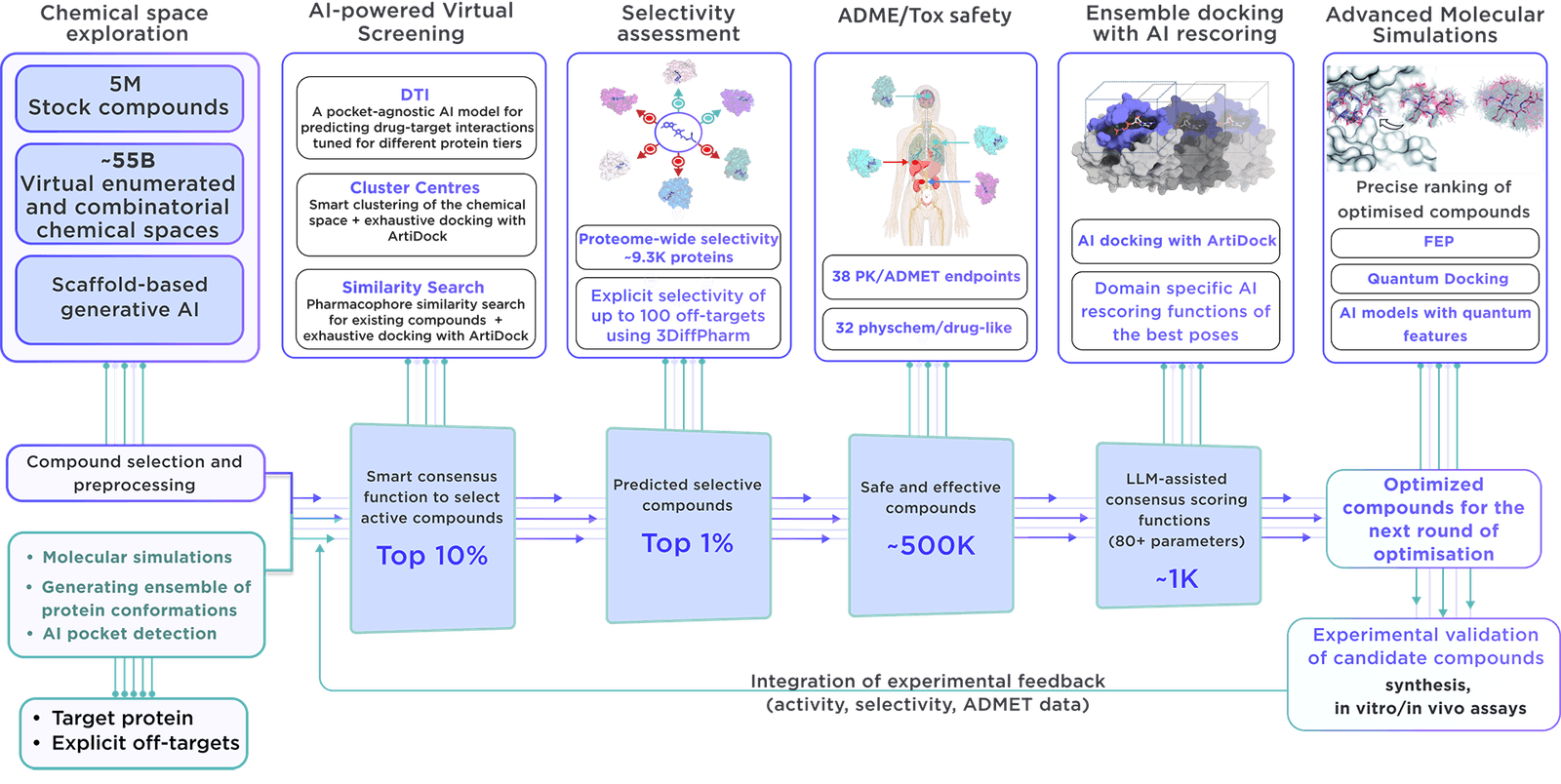Focused On-demand Libraries - Receptor.AI Collaboration
Explore the Potential with AI-Driven Innovation
The focused library is created on demand with the latest virtual screening and parameter assessment technology, supported by the Receptor.AI drug discovery platform. This method is more effective than traditional methods and results in higher-quality compounds with better activity, selectivity, and safety.
The compounds are cherry-picked from the vast virtual chemical space of over 60B molecules. The synthesis and delivery of compounds is facilitated by Reaxense.
In the library, a selection of top modulators is provided, each marked with 38 ADME-Tox and 32 parameters related to physicochemical properties and drug-likeness. Also, every compound comes with its best docking poses, affinity scores, and activity scores, providing a comprehensive overview.
Our top-notch dedicated system is used to design specialised libraries.
Utilising molecular simulations, our approach thoroughly examines a wide array of proteins, tracking their conformational changes individually and within complexes. Ensemble virtual screening enables us to address conformational flexibility, revealing essential binding sites at functional regions and allosteric locations. Our rigorous analysis guarantees that no potential mechanism of action is overlooked, aiming to uncover new therapeutic targets and lead compounds across diverse biological functions.
Several key aspects differentiate our library:
- Receptor.AI compiles an all-encompassing dataset on the target protein, including historical experiments, literature data, known ligands, and structural insights, maximising the chances of prioritising the most pertinent compounds.
- The platform employs state-of-the-art molecular simulations to identify potential binding sites, ensuring the focused library is primed for discovering allosteric inhibitors and binders of concealed pockets.
- Over 50 customisable AI models, thoroughly evaluated in various drug discovery endeavours and research projects, make Receptor.AI both efficient and accurate. This technology is integral to the development of our focused libraries.
- In addition to generating focused libraries, Receptor.AI offers a full range of services and solutions for every step of preclinical drug discovery, with a pricing model based on success, thereby reducing risk and promoting joint project success.
Receptor.AI
Q96LC7
UPID:
SIG10_HUMAN
ALTERNATIVE NAMES:
Siglec-like protein 2
ALTERNATIVE UPACC:
Q96LC7; A8K1I5; A8K3C7; C9JJ33; C9JM10; F8W917; Q3MIR5; Q6UXI8; Q96G54; Q96LC8

